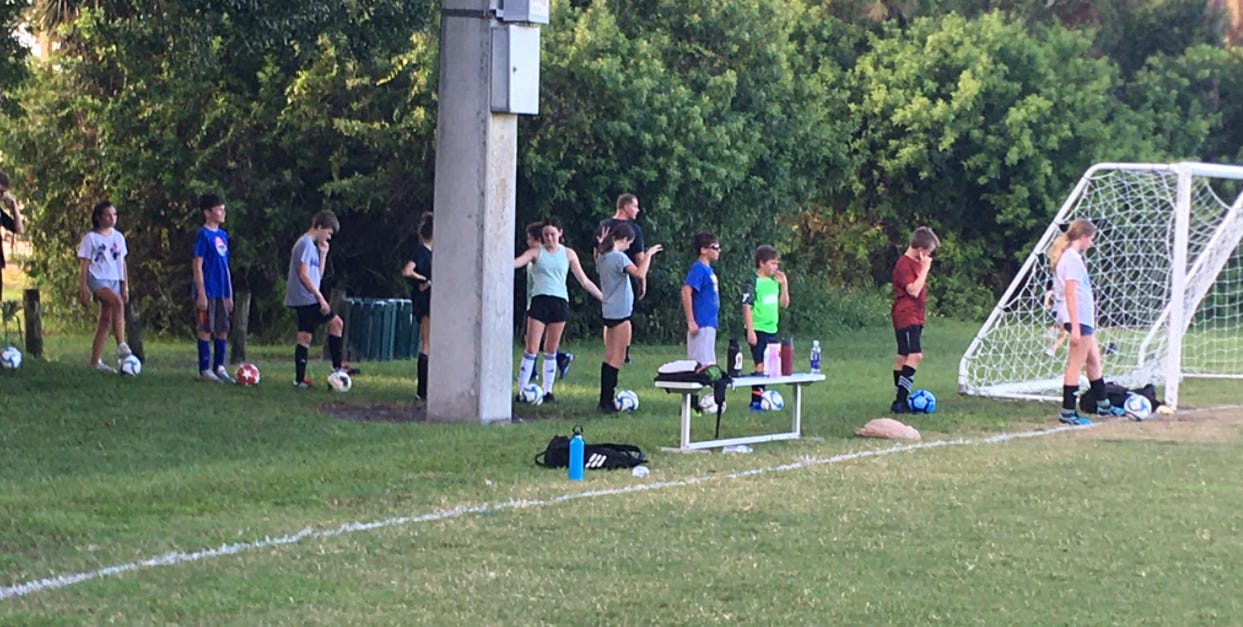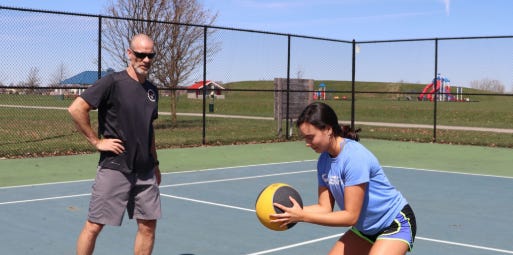If Practices Are So Important, Then Why Is There is So Much Standing Around?
COVID19 has pushed youth sports coaches & organizations to re-think the role of practice in athlete development. This week we look at the keys in running an efficient and productive practice.
It’s Thanksgiving in Canada tomorrow. Here is wishing you and yours in finding lots for which to be grateful.
This article tapped into a collective of 180 of coaching and teaching experience from our experts. We hope you enjoy this week’s topic around the importance of practice in youth sports development.
Back in 1984, I took a class at McGill University with Professor John Chomay. Professor Chomay, or “Coach” as we called him, was one of those wise, experienced teachers who was a great communicator. Coach had spent years in the trenches, both coaching on the field of play and teaching in the classroom. One of the key messages Coach had around practice was that it was only as good as the planning that went into it. At McGill, going through the Physical Education program, I remember rolling my eyes many times at the repetitive nature of working on the lesson and practice plans. The mapping out the progression of each session based on the objectives and anticipated outcomes. Lesson planning was consistent through my years there, it came from different professors in different classes around teaching methodology, but Coach Chomay’s message was the most effective.
It did not take long for me to see tremendous value in that teaching. Over the course of my 30 years coaching and teaching in the classroom, field and board room this wisdom has served me well. For coaches, over the course of a season, and in dealing with athletes/students of different abilities it becomes critical to have a well organized plan that supports development
What did we want to accomplish?
How were we going to get there?
How can everyone contribute to the goal?
Without that blueprint, that planning, everything loses its effectiveness.
COVID19 is forcing coaches, teachers and organizations to re-think the development process of their athletes.
In the world of youth sports, the competition model has been pushed back to a developmental model. There are no tournaments and the teams we compete against have been significantly reduced. Organizations are being forced to get creative due to increased practice time and decreased competition time.

In recent years, one could argue that the competition model (high number of games) has been hurt by the lack of practice time (developmental model).
The only team sport that has not lost sight of this might be football. But that can be attributed to the physical nature of the game not allowing players to play more than 1x per week.
Coach Glen “Doc” Rivers is one of the most successful coaches in basketball history. He has almost 1000 wins in the NBA, and grew up focused on one thing. Playing basketball. In the Netflix documentary Playbook (info below), Coach Rivers talks about never viewing practice as practice. From a child to modern day, he always viewed practice as “playing basketball”. (See the trailer below, it is an interesting series for all coaches).

Thank you for reading The Physical Movement. The Physical Movement is a newsletter for all those involved and touched by youth sports. Athletes, coaches, educators, administrators, parents and officials. We cover topics around leadership through play, sports, and physical activity.
If you are enjoying this article or any from our blog, and/or learned something here, please share with a colleague or 2. There are no subscription fees.
Somewhere along the line, practice has changed. It became less about play and more about work. It became a lot less fun than the games themselves. The decline of the role of practice has hurt our youth sports.
If you go to the local rink, court, field and observe practice, you will notice a few things.
1. Often practice is run by one person. There is often not much teaching going on.
2. There are many kids standing around.
3. A very short list of go to drills that are repeated in each practice. There is not a lot of variety.
4. There is not a lot of objective outcomes being promoted or targeted.
In organizations and practice fields where teams have made practice a high priority as a vehicle for development, the above is not found. So while this is a non-scientific observation, discussions with experienced coaches reveal that the above is not as much the exception as we would hope.

The Physical Movement brought this topic up in recent communications to experienced coaches, specifically around managing practice in a team setting and the biggest struggle in making them effective.
Coach Jerry Weinstein, has been in baseball for over 60 years at multiple levels. He is considered the godfather of baseball.

TPM documented Jerry’s work and philosophy here.
“The biggest issue is not enough coaches & too many players.
Practices must be extremely organized & teach the players how to coach one another. Early & post practice work with individual players (example: bullpens etc. ) A lot depends on your facility. Cages? Work in stations. When something goes south, bring everyone up. Eventually they get tired of that & start to police themselves. Keep it game speed & competitive.”
Coach Frank Fascia has been a volunteer for 25 years in youth sports with a focus on baseball in Brampton, just outside Toronto.

TPM documented Frank’s work and philosophy here.
“I have to tell you, at the rep level if there's still standing around at practice there's something very wrong with either the coach selection or coach development with that organization.
The key to not standing around is to have stations. In order to run stations, you need volunteers and appropriate supplies (do you have enough balls, nets, fungos, etc.).
The issue that I find is not enough coaches actually prepare a formal practice plan. And if they do, they don't share it with their players and coaches prior to practice, so there is a lot of time wasted trying to execute. Be efficient. Plan based on goals and resources and communicate the plan. “
Coach Lee Taft has coached and taught for 30 years in various settings.

TPM documented Coach Taft’s work here.
His thoughts on the topic were:
“Situations where all kids can be actively involved during practices versus standing and waiting in line is always the optimal way in which learning occurs best".
Very quickly we get some common themes from these 3 responses:
· Being well organized and having practice plan.
· Having multiple coaches (not always feasible, but Coach Weinstein brings up a great point on this addressed below)
· Using stations to keep engagement.
· Keeping young athletes moving is ideal.
We also see some of that Coach Chomay wisdom come out from our 3 coaches. When optimal learning occurs (Coach Lee Taft). Coaches not preparing a formal practice plan (Coach Fascia). Having players coach one and another (Coach Weinstein).
A word on players coaching/helping other players. This is a great point by Coach Weinstein. Unless very, very young this is a great opportunity for players to support other players. Many organizations don’t’ have many coaches per team volunteer. To build that culture among players of paying attention, observing, communicating, learning from each other and building rapport. We see pro players talking among themselves during game time around strategy all the time. Why can that not be taught at younger levels? Our young athletes are bright enough and this can help their development.
So what are the key ingredients to running an efficient and productive practice in a team setting?
1. The coach and organization must establish the importance of practice to the athletes and families early in the process. The expectations that come as part of being on the team need to include a commitment to practice in development, playing time and overall team performance.
2. There must be a practice plan for each practice. Individual skills are mapped out at certain times and then team skills. Of course the time focused on team skills varies as opposed to individual skills based on age level and ability.
Equipment layout, duties and responsibilities, time allocated to each and accommodation to unforeseen interruptions and issues are critical. The purpose of the practice of that day communicated to players prior, and expectations are clearly defined. The head coach would lay a foundation to the team skills focused on and be adaptable to situational play strengths and weaknesses observed.
3. All of these set the expectation level of what practice is about. Without full focus and attention by coaches and players, efficiency gets lost. Punctuality, attentiveness, effort, collaboration, attitude, communication and attention to detail become cornerstones to the high standard of practice and its role in overall development.
If one of the goals around team sports is the development of life skills in our athletes, then the value of practice in must be a priority. Practice must have more value to the process than game time. Practice is where progress occurs.
For coaches to look back on a year and see improvement in players and team play, then one can feel efficiency kicking in. If the observation is inconsistent play and performance both by individuals and the team, then that is a sign that practice may not be checking the boxes required.
And yes, this is a skill.
To run practices with full buy in, so players and assistant coaches benefit from this time, feel themselves getting better originates from the head coaches planning, communication and skill set.
Repeating the same mindless drills without communication on their purpose, or progressions takes practice back a few notches.
“Practice does not make perfect. Perfect practice makes perfect”.- Vince Lombardi
PLAY. LEAD. BE STRONG.
Additional notes supporting this article:



